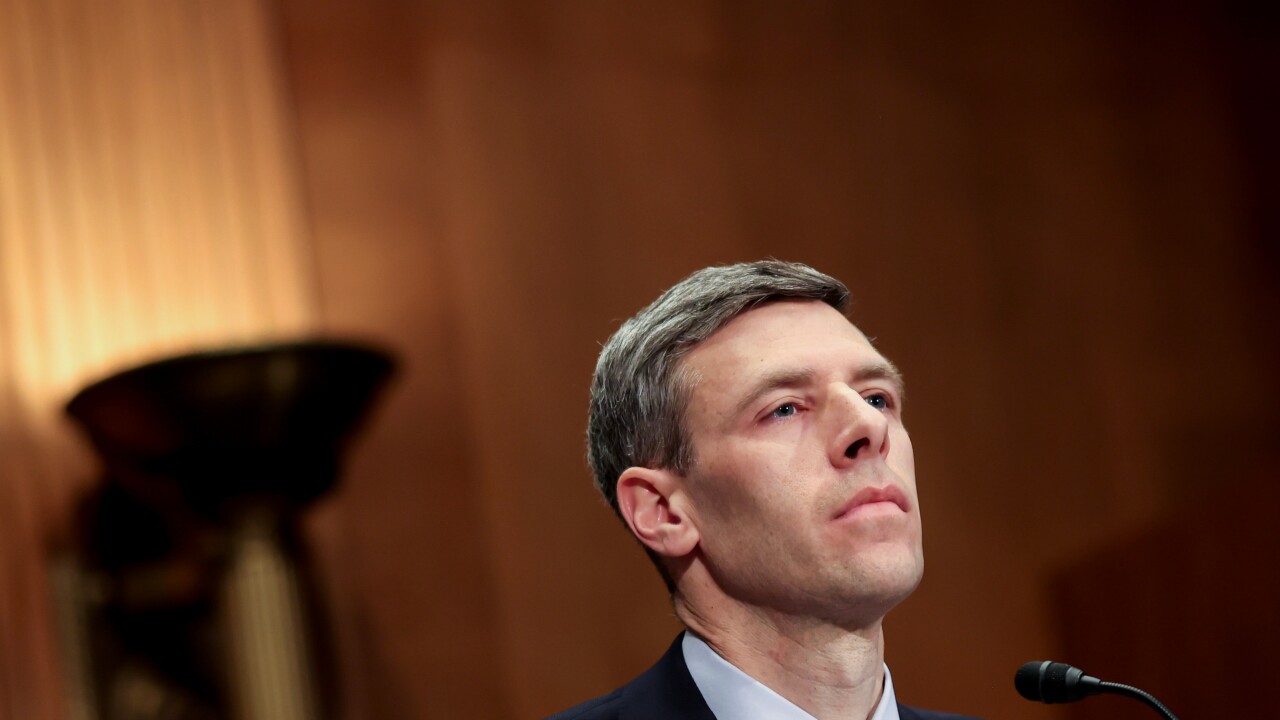It is ironic that on the day the Clinton administration proposed to repeal the Glass-Steagall Act, the Barings PLC investment bank failed, due to derivatives trading. Could this be an ominous warning? Maybe.
Because of proprietary risk and the risk that new bank activities pose to the bank's capital and to the FDIC fund, congressional debate is most likely to focus on how new nonbank activities are regulated rather than on which activities are permissible. Now is the time for Congress to define closely who, how, and what should be regulated that has an affiliation with a commercial bank or savings and loan association.
Deregulation
* Congressional debate on expansion of nonbank activities by bank holding companies offers an opportunity for deregulation of both banking and nonbank activities. Moreover, if the risk of the nonbank activities can be insulated from the banking activities, there is no need for bank regulators to regulate the bank holding company.
There has always existed a means of creating a barrier that protects the capital and reserves of the bank from the risk of nonbank activities.
This can be done by (1) requiring nonbank subsidiaries to be incorporated and capitalized in a separate subsidiary under the bank holding company, and (2) by not allowing most intercompany transactions between the bank and nonbank portions of the bank holding company.
Thus, there is no need for regulation, and a Chinese wall is established to protect bank depositors and the FDIC fund. If the nonbank subsidiary runs into financial difficulties, the bank holding company would be allowed to come to its aid.
This would have to be through a capital injection, since intercompany transactions, such as loans, are not allowed. The bank holding company can inject as much capital as it wants as long as the bank capital ratios do not fall below regulatory standards.
Now suppose the new nonbank subsidiary fails. If it is an insurance company, the insurance regulator takes over. If it is in a nonregulated industry, it fails like any other company. The bank remains solvent and systemic risk is reduced.
A Trade-Off: No Intercompany Transactions for Expansion and No Regulation
* One might question whether the restriction of intercompany transactions is too harsh. Maybe so, but it gives a level playing field to like companies not affiliated with bank holding companies. Furthermore, the restrictions answer one of the main concerns of nonbank competitors. Any intercompany transaction that could have a negative effect on the bank's capital - such as loans, management fees, etc. - should be eliminated.
However, cross marketing and revenue sharing should be allowed between the bank and nonbank entities in such a way as not to put the bank's capital at risk in order to allow the banks to compete on an even playing field.
Although the holding company would be giving up a useful and sometimes profitable management instrument, this could be a trade-off for nonregulation of the activity. Once a workable Chinese wall is created, there is no reason why the bank holding companies cannot pursue any nonbank activity.
Isolating Proprietary Risk
* A serious problem that exists today within a bank is proprietary risk, or betting the bank's capital. Activities that perform these functions should also be placed in separately capitalized nonbank subsidiaries.
Management can be left unregulated to conduct these activities, answering only to the discipline of the market. Bank regulators can then concentrate their efforts towards traditional banking risk, such as credit and interest rate risks.
Activities which put capital at risk, such as taking positions in derivative products and foreign exchange, should be isolated from the bank's capital by being placed in a separate nonbank subsidiary structured under the bank holding company.
Congress has to make a decision on how new nonbank activities will be regulated. Congress cannot delegate the decision to bank regulators, who, of course, have a bias toward regulation. Such a decision was left up to the Federal Reserve with the passage of the 1970 Bank Holding Company amendments.
The Fed has had the opportunity to delineate proprietary risk from traditional bank risk using separately capitalized subsidiaries, but has generally chosen to regulate these activities.
The complexity of risk-taking instruments, the speed at which they can be executed from anywhere in the world, and the diversity of out financial institutions raises serious questions whether proprietary risk can adequately be regulated by the Feds. Even if they could, there is a serious cost for such regulation, which this country can ill afford given a more affordable alternative of market discipline.
As banking organizations expand into new activities (and as far as this author is concerned, there should be no limits if their activities are properly structured to protect the bank's capital) the need becomes more important for a clear directive from Congress as to the extent and limits of regulation.
The banking industry should be structured so that bank capital is isolated from nonbanking and proprietary risks, that all bank regulation is accomplished through the bank, and that market discipline is allowed to regulate bank holding company and nonbank activities. Such a bold move by Congress will significantly reduce the cost of regulating banking organizations, lower deposit insurance costs, and reduce systemic risk in the financial system.





